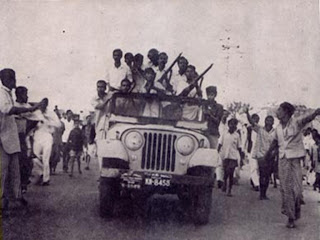
The meeting on the Meghna was the first set-piece battle of the liberation war. It amply demonstrated enemy’s superiority in fire power and its ever whelming capability to move at ease by air and water. The enemy was better trained in modern warfare and in the handling of weapons. With the lack of mobility and fire power the two main deciding factors for any conventional warfare, no commander can ever conceive of an armed engagement. But the situation was different with the liberation army. We had to fight with what ever we had. We knew it for certain that today’s defeat would bring forth victory in the future. The first set-piece battle had its obvious toll in killed and injured. Subedar Sirajul Islam, Lance Naik Abdul Hai, sepoys Kafil Uddin and Abdur Rahman Sarkar and many others died in this action while a good number got injured.
















































